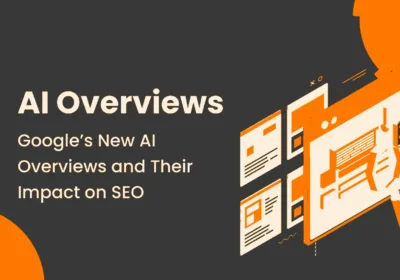GEO vs. AEO vs. SEO: A Marketer’s Guide to 2025
The digital marketing landscape is constantly evolving, and with 2025 around the corner, businesses must adapt to new trends to stay competitive. While SEO (Search Engine Optimization) has been the gold standard for ranking on Google, emerging technologies like AI-driven search have given rise to AEO (Answer Engine Optimization) and GEO (Generative Engine Optimization). But what do these terms mean, and how can businesses leverage them for better online visibility? Let’s break it down in simple terms.
What is SEO (Search Engine Optimization)?
SEO is the practice of optimizing websites to rank higher in search engine results, mainly Google. It involves techniques like:
- Keyword Optimization
- Quality Content Creation
- Backlinks and Off-Page SEO
- Technical SEO (site speed, mobile-friendliness, etc.)
- User Experience (UX) Optimization
SEO remains critical for driving organic traffic, but search engines are changing how they deliver results.
What is AEO (Answer Engine Optimization)?
AEO is about optimizing content to appear in AI-driven answer engines like Google Assistant, Siri, or Alexa. These platforms prioritize direct, concise, and structured answers instead of long-form content.
Key Elements of AEO:
- FAQ-style content (e.g., “What is digital marketing?”)
- Schema Markup to help search engines understand content better
- Conversational, voice-search-friendly content
- Featured Snippets Optimization (aiming for the top spot in Google’s quick answers)
As more users rely on voice search and AI-powered assistants, AEO is becoming essential for brands wanting to maintain visibility in search results.
What is GEO (Generative Engine Optimization)?
GEO is the newest player in the game. With AI-driven search engines like Google SGE (Search Generative Experience) and ChatGPT-like search tools, search results are now being generated dynamically instead of just displaying a list of links.
Key Elements of GEO:
- Creating AI-friendly content that generative models can interpret and use
- Conversational and in-depth articles that answer multiple aspects of a query
- Structured data and high-authority sources to gain trust in AI-generated responses
- Optimizing for AI Overviews where Google’s AI-generated responses pull information from various sources
GEO is all about making your content valuable, well-structured, and adaptable to AI-powered search engines.
SEO vs. AEO vs. GEO: Key Differences
| Feature | SEO | AEO | GEO |
| Focus | Ranking websites in search results | Answering direct questions for AI assistants | Optimizing content for AI-generated search responses |
| Content Style | Keyword-driven, detailed content | FAQ-based, concise answers | Conversational, AI-friendly content |
| Optimization Tools | On-page SEO, backlinks, technical SEO | Schema Markup, voice-search optimization | AI-generated content analysis, NLP (Natural Language Processing) techniques |
| Search Intent | Traditional web search | Voice and conversational search | AI-driven responses |
How to Optimize for 2025
- Combine SEO, AEO, and GEO Strategies – Don’t rely on just one method. Use traditional SEO while adapting to AI-driven search trends.
- Create AI-Friendly Content – Focus on structured, well-organized, and conversational content.
- Use Schema Markup – Helps search engines and AI understand your content better.
- Monitor AI Search Trends – Stay updated on how Google’s AI search evolves and adjust your content accordingly.
- Prioritize User Intent – Whether users type, speak, or let AI search for them, your content should directly answer their queries.
Conclusion
SEO isn’t dead, but it’s evolving. As AI reshapes how people find information, AEO and GEO are becoming essential for marketers. By understanding and implementing all three strategies, businesses can stay ahead in 2025 and beyond.
Want to future-proof your digital marketing? Start optimizing for GEO and AEO today!




Leave a Reply